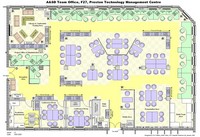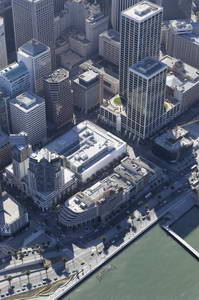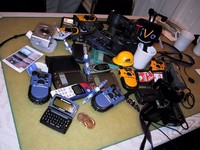War rooms increase productivity
 Some of the best years of my working life were spent in an office environment I designed to promote collaborative work. It had many of the characteristics of a “war room”. With quiet areas around the sides, tables in the middle and loads of break-out areas, white-boards, flip charts and a design review/presentation area. I described this environment in a previous post. I have generally been frustrated at the lack of discussion about workspace design in the IT press, so I was pleased to come across this article that resonated strongly with my experience:
Some of the best years of my working life were spent in an office environment I designed to promote collaborative work. It had many of the characteristics of a “war room”. With quiet areas around the sides, tables in the middle and loads of break-out areas, white-boards, flip charts and a design review/presentation area. I described this environment in a previous post. I have generally been frustrated at the lack of discussion about workspace design in the IT press, so I was pleased to come across this article that resonated strongly with my experience:
Recently, many companies in the software industry have been experimenting with putting teams of workers into “war rooms” to enhance communication and promote intense collaboration, explains Stephanie Teasley, an assistant research scientist in the U-M School of Information’s Collaboratory for Research on Electronic Work.
Instead of toiling in separate cubicles, workers sit at wall-less workstations in one big, open room. The room is typically outfitted with central worktables, whiteboards and flip charts to facilitate group discussions. While companies expect benefits from such arrangements, workers sometimes balk at the idea, fearing they’ll sacrifice privacy and the quiet they need to concentrate on demanding tasks. The U-M …



 This
This 

 I friend of mine has let me have a new video camera, its a Polycom ViaVideo II and the quality and refresh rate is greatly improved compared to my ancient USB IBM Ultracam. One more step towards reduced travelling.
I friend of mine has let me have a new video camera, its a Polycom ViaVideo II and the quality and refresh rate is greatly improved compared to my ancient USB IBM Ultracam. One more step towards reduced travelling.
 As I work from home I tend to make sure I do my share of the housework. My normal daily jobs include:
As I work from home I tend to make sure I do my share of the housework. My normal daily jobs include:
 This is a
This is a 
 I just realised that
I just realised that 
 Here is a great discussion about
Here is a great discussion about